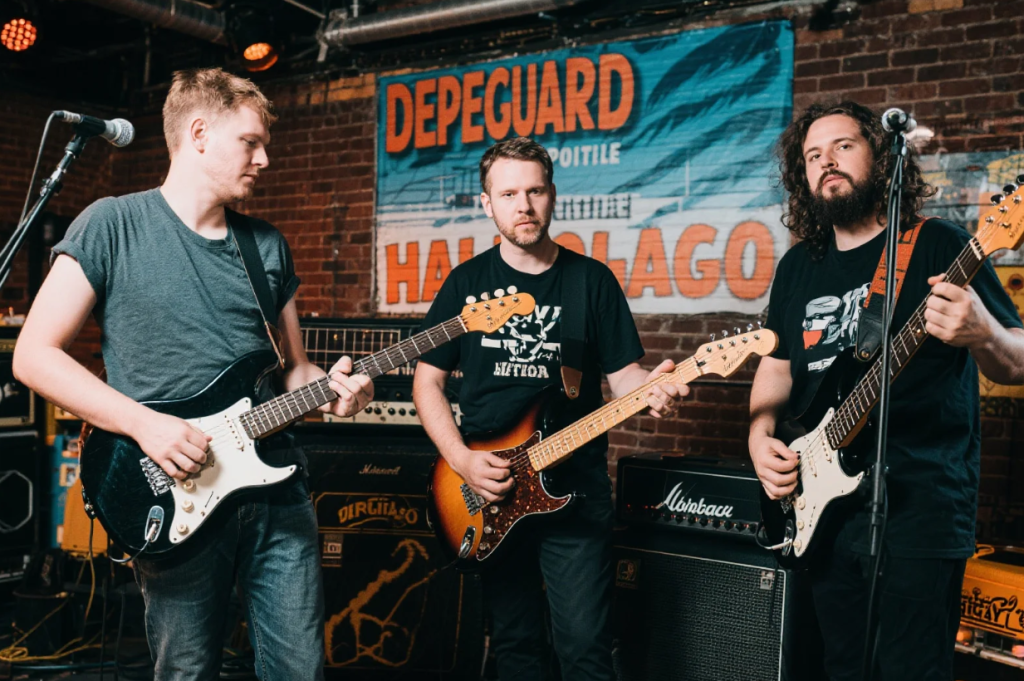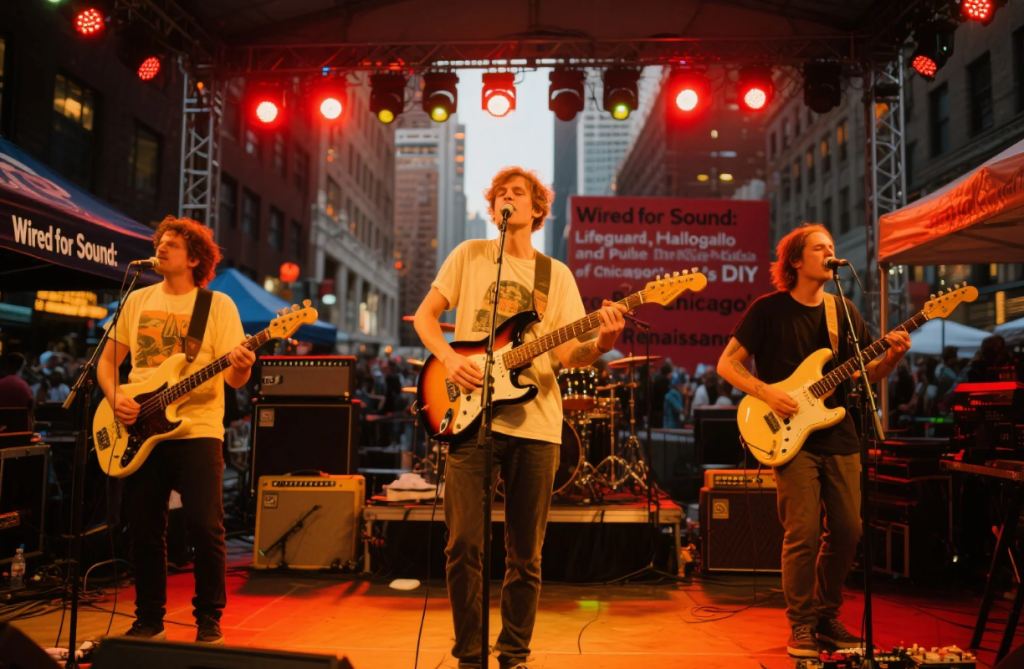On a humid Friday night in Chicago, the kind where alleys smell like vinyl and freedom, you’ll likely hear the thud of drums and the angular tension of guitar riffs seeping from a basement or backroom show. It’s in these gritty, glowing spaces that a scene is breathing—alive with xeroxed flyers, $5 covers, and kids in oversized thrifted coats trading thoughts on distortion pedals. At the center of it all stands Kai Slater, 20 years old, clutching a guitar in one hand and a freshly stapled zine in the other. It’s not just music he’s shaping with his band Lifeguard; it’s a full-on cultural microclimate. And it feels more vital than anything major labels are pushing out these days.

Slater’s zine Hallogallo is a physical artifact in an increasingly digital world, a hand-folded, ink-smeared reminder that culture still grows best when it’s made by hand. The name is a loving nod to the hypnotic track by German Krautrock legends Neu!, a band that rewired the DNA of post-punk long before most of Lifeguard’s fans—or even their parents—were born. Inspired by mod revival publications and punk zines from the ’80s, Hallogallo is as much an artwork as it is a publication. It brims with collage aesthetics, grainy show photos, urgent essays, and scattered handwriting—each page feeling like a transmission from the nerve center of something new and old at once.
There’s something immensely powerful about this return to analog methods in an era obsessed with SEO optimization and viral loops. And yet, ironically, what Hallogallo does is highly valuable in today’s digital attention economy. High CPC keywords like independent music publishing, DIY culture, and youth-led creative scenes come to life on these pages, not through algorithms but through the tactile persistence of young people who still believe in the weight of printed words. Slater isn’t just documenting a scene; he’s helping build one—brick by sonic brick.
Lifeguard’s debut album Ripped and Torn is cut from the same cloth. Named after the early British punk zine that gave voice to the Sex Pistols-era explosion, the record is a jagged, howling dispatch from a band trying to make sense of the present by tunneling through the past. And here’s where something remarkable happens: the album doesn’t feel like nostalgia. It feels like translation. It’s the sound of discovering tension in your own bones, of learning to scream without losing your melody. It’s about capturing the particular chaos of growing up in a world that’s constantly falling apart while insisting you put yourself together.
A friend of mine, Jules, first played Lifeguard for me on a long winter walk through Humboldt Park. We’d both been spinning in the kind of seasonal depression that you don’t talk about directly—you just play louder music. As Ripped and Torn blasted from her Bluetooth speaker, I could feel something shift. The tracks were raw but intentional, brutal but not bleak. There was a rhythm to the despair, like riding your bike down cracked concrete and somehow not wiping out. That’s what makes this record more than just a cool debut—it feels like survival in song form.
This kind of energy doesn’t come from nowhere. Chicago, with its industrial past and artistic present, has always been fertile ground for outsider sounds. But the current youth-led DIY post-punk scene is something especially electric. Bands like Horsegirl, Friko, and Post Office Winter are threading similar wires—pulling from shoegaze textures, noise rock edges, and post-hardcore structures, but twisting them into new forms. They’re sharing gear, trading zines, booking each other’s gigs. It’s not a scene in the traditional sense; it’s more like a mutual aid network in musical form. And Slater, with his dual role as musician and editor, becomes something like its archivist and instigator.
For anyone who’s watched the corporate music industry chase virality at the expense of vision, Lifeguard’s approach is a kind of quiet rebellion. They don’t need brand sponsorships or sync deals. They need floor space, cheap amps, and community. But that doesn’t mean they’re obscure by default. In fact, Ripped and Torn is the kind of album that thrives on streaming platforms—its urgency makes it algorithmically sticky, while its lyrical depth encourages repeat listens. Pair that with the rising search volume for phrases like emerging post-punk artists and next-gen indie rock, and you realize this scene is both culturally crucial and commercially ripe.
What sets Lifeguard apart isn’t just how they sound, but how they connect. When you see them live, there’s no stage posturing or irony. Slater sings with a kind of open-palmed sincerity that feels downright radical. And that’s rare in a genre that often prides itself on detachment. Maybe it’s his zine-making sensibility bleeding into the music—each track feels almost like an essay, an observation, a collage of feelings that didn’t make sense until you heard them screamed back at you.
And it’s not just about the band or the zine—it’s about what they inspire. You’ll go to a Lifeguard show and find a girl with a black eye starting her own zine. A queer kid teaching someone how to solder pedals. A middle schooler writing their first lyrics on the back of a flyer. It’s art as ecosystem. It’s the idea that even if the world forgets you, there’s still a place where your voice matters. That’s what the best punk has always done—it gives you back to yourself, louder.

As mainstream conversations around youth mental health, creative entrepreneurship, and authenticity in the music industry continue to gain traction, Lifeguard exists at a perfect intersection. Their work isn’t curated for attention—it’s created for connection. That’s a rare value proposition in an age of content overload. And it’s why people are paying attention, not just with clicks but with their hearts.
There’s a photo I keep in my phone from a recent Lifeguard gig. It’s blurry, obviously, taken mid-mosh. Slater’s hair is a blur of motion, his guitar strap frayed at the edges. But everyone in the frame looks locked in—screaming, sweating, feeling. That photo means more to me than any chart position or editorial feature. Because it proves the thing we’re all still hoping is true: that somewhere in the noise, something real is still being made.
📸💥
